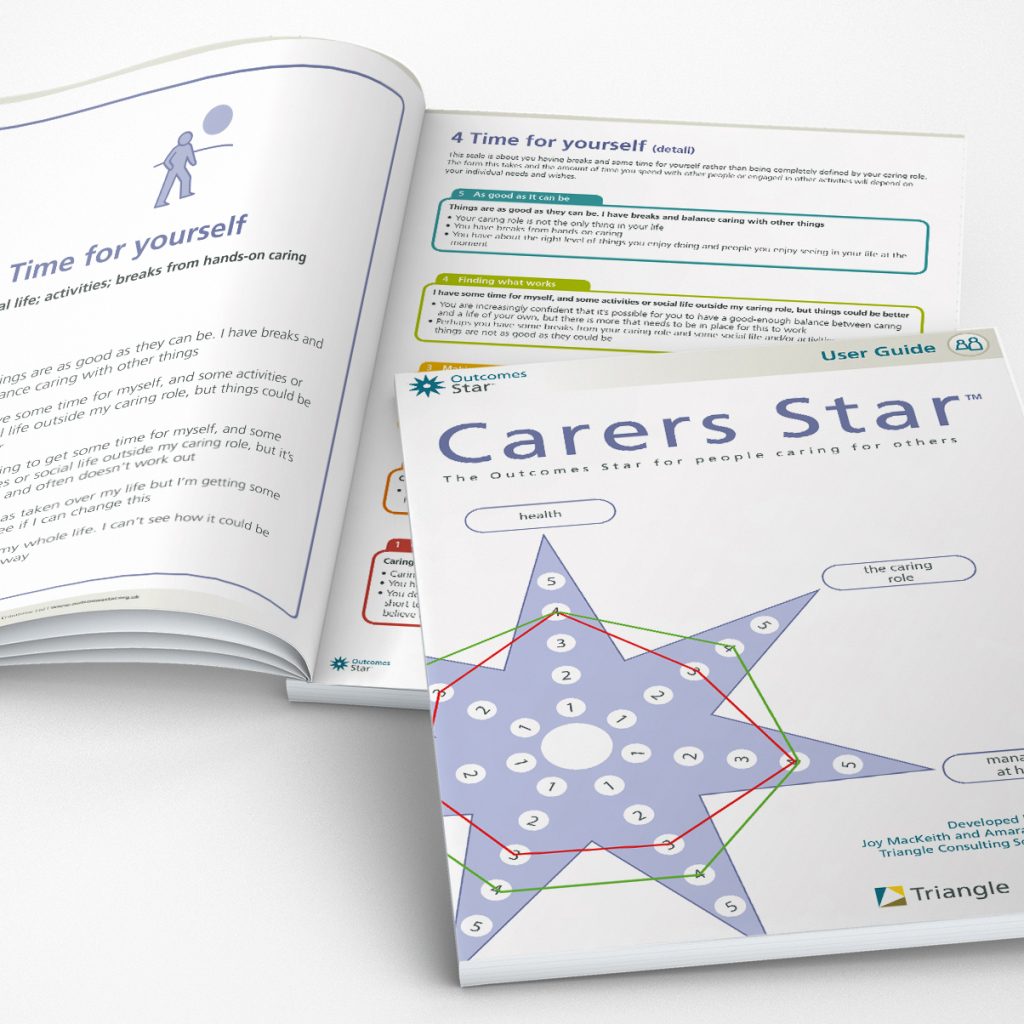How do you get someone whose life is centred on another person to look after themselves? For more than 50 carer organisations, the answer is with the help of the Carers Star.
Published in 2014, the year of the Care Act, the Carers Star filled an immediate need for services and commissioners alike – to measure the impact of “care for the carers”. But the Star isn’t just about good outcomes data. Even more crucial is its ability to engage struggling carers in the first place. And the key to the Star’s success here is collaboration.
“Carers don’t want someone to come in and take over,” says Victoria Mellor, lead care advisor on the CarerLinks project for Crossroads Together. “There’s nothing worse than an assessment where someone’s in front of you scribbling away and you don’t know what’s being written. It can make you feel a bit paranoid – how is someone going to use that information?”

By contrast, she says, the Carers Star is a tool that both worker and carer can see. Its visual form – the star shape – makes it instantly clear what is working and not working in each of seven areas of a carer’s life. Worker and carer fill it in together, in any order, led by the carer’s immediate concerns.
“Carers usually have something they want to focus on straightaway,” says Victoria. “With the Star you can look at that first, so the carer gets their priorities straight in their head. Then you work with them and map things out together – this is going to be your job, and these things are going to be mine. It really empowers the carer.”
How you fill in the Star is equally flexible. Crossroads Together use it for assessment at the first home meeting, but sometimes carers are in crisis or just not ready and it doesn’t feel appropriate to complete the Star. “Then I just use it as a guide and a prompt to bring things back if the conversation goes off at a tangent, and I fill it in when I’m back in the office,” says Victoria.
“Later on, when things are brighter for them, we use it reflect on what’s changed. They like to look back at the journey – they ask ‘what did I say the first time? I’m in a different place now’”. That’s really helpful. One of our main aims is to empower them to take responsibility for what they need and how they can achieve it.”
At the original Carer Star training, some Crossroads Together workers worried that carers wouldn’t like the Star. “But carers do want to engage,” says Victoria. “There’s no typical carer – they definitely keep you on your toes. But that’s the great thing about the Star – you’re able to use it in different ways with different people. It’s very adaptable.”
Stephen Taylor, service delivery manager at Carers Leeds, agrees. “There are lots of different ways to get the carer to engage with it. Carers like the visual stuff, they like the scaling, and they like to see change. The Star is about their journey – it helps carers to stay focused on the bigger picture, not just a bad week they’re having.”
Traditional assessments, he says, tend to focus on what is wrong. “The Star is much more collaborative. Because it’s strengths-based, people are really engaging in their own care plan. Through good conversations, they’re coming up with their own ideas about what works with them. The collaborative approach is a very powerful thing.”
And the collaboration isn’t just between worker and carer. Both Crossroads Together and Carers Leeds have found that the Star can help with spreading good ideas and ways of working across their organisations.
“If an adviser has a really successful Star, we use it as an example in a team meeting,” says Victoria. “It helps show what’s working, say in Liverpool, that we might want to duplicate in Shropshire.”
“There’s real potential to share good practice when you see the variations,” says Stephen. “When I look at the data, I try and look across the individual teams and how they’re doing in particular Star areas. For example, are our mental health specialists doing better on the “How you feel” scale for carers? It’s about asking good questions – what are you doing well?”
“I think the Star’s great – I like the questions it raises.”
Using the Carers Star
- The Star works well for carers with complex or ongoing needs
- It’s typically used over three to six months
- Each scale is underpinned by a five-stage Journey of Change – cause for concern, getting help, making changes, finding what works, as good as it can be
- It’s also possible to use the Carers Star on the phone – Triangle can advise on good practice
- For young carers, consider My Star instead of the Carers Star.
The Carers Star is available to all organisations with a Star licence, and full training can be given for workers and managers. Triangle is exhibiting at the Carers Trust Network Partner conference from 11th to 12th March. If you are attending and would like to meet the team, or want more information on the Carers Star, please contact us on info@triangleconsulting.co.uk or +44 (0) 207 272 8765.


